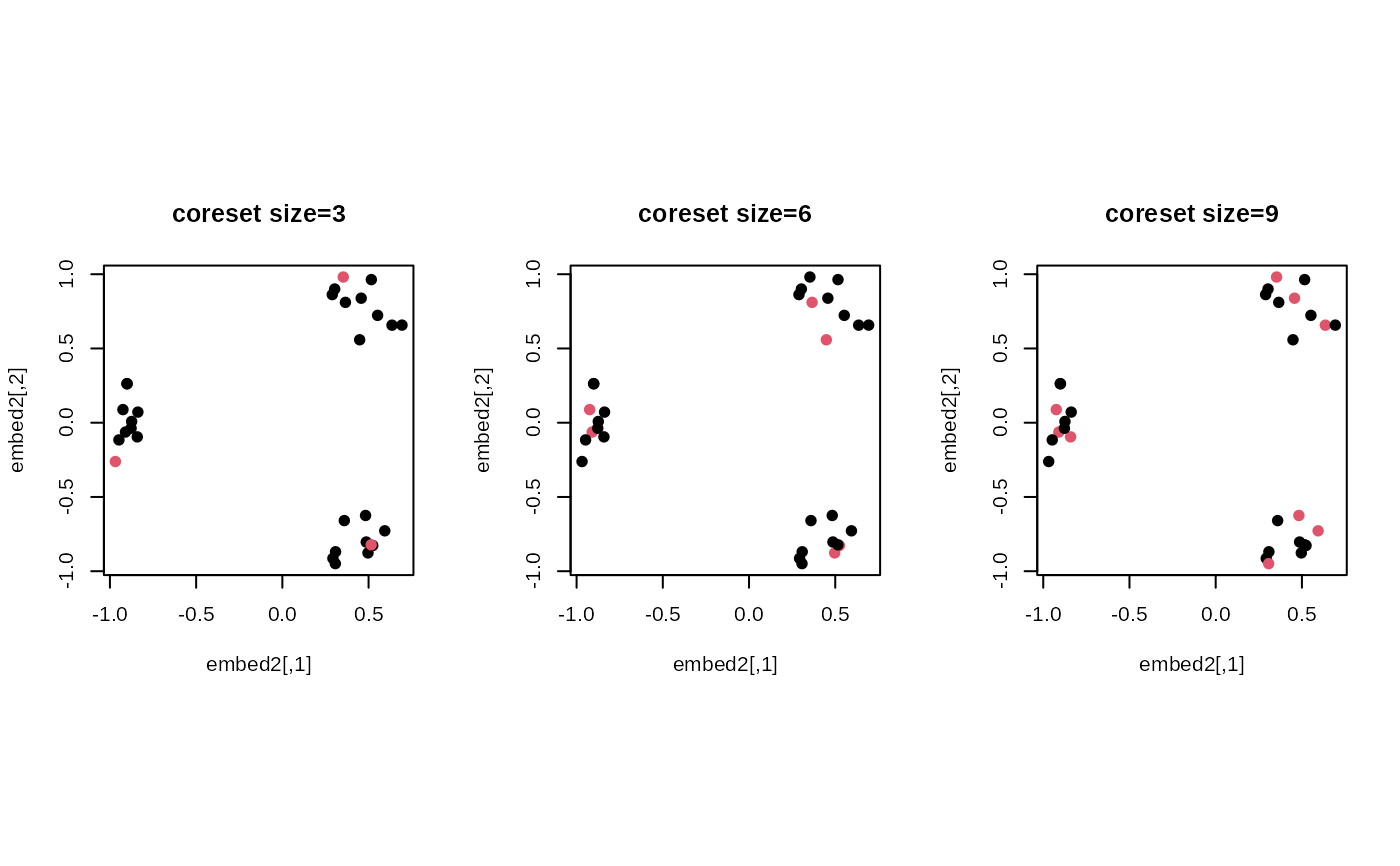Given manifold-valued data \(X_1,X_2,\ldots,X_N \in \mathcal{M}\), this algorithm finds the coreset of size \(M\) that can be considered as a compressed representation according to the lightweight coreset construction scheme proposed by the reference below.
Arguments
- riemobj
a S3
"riemdata"class for \(N\) manifold-valued data.- M
the size of coreset (default: \(N/2\)).
- geometry
(case-insensitive) name of geometry; either geodesic (
"intrinsic") or embedded ("extrinsic") geometry.- ...
extra parameters including
- maxiter
maximum number of iterations to be run (default:50).
- eps
tolerance level for stopping criterion (default: 1e-5).
Value
a named list containing
- coreid
a length-\(M\) index vector of the coreset.
- weight
a length-\(M\) vector of weights for each element.
References
Bachem O, Lucic M, Krause A (2018). “Scalable k -Means Clustering via Lightweight Coresets.” In Proceedings of the 24th ACM SIGKDD International Conference on Knowledge Discovery & Data Mining, 1119–1127. ISBN 978-1-4503-5552-0.
Examples
#-------------------------------------------------------------------
# Example on Sphere : a dataset with three types
#
# * 10 perturbed data points near (1,0,0) on S^2 in R^3
# * 10 perturbed data points near (0,1,0) on S^2 in R^3
# * 10 perturbed data points near (0,0,1) on S^2 in R^3
#-------------------------------------------------------------------
## GENERATE DATA
mydata = list()
for (i in 1:10){
tgt = c(1, stats::rnorm(2, sd=0.1))
mydata[[i]] = tgt/sqrt(sum(tgt^2))
}
for (i in 11:20){
tgt = c(rnorm(1,sd=0.1),1,rnorm(1,sd=0.1))
mydata[[i]] = tgt/sqrt(sum(tgt^2))
}
for (i in 21:30){
tgt = c(stats::rnorm(2, sd=0.1), 1)
mydata[[i]] = tgt/sqrt(sum(tgt^2))
}
myriem = wrap.sphere(mydata)
## MDS FOR VISUALIZATION
embed2 = riem.mds(myriem, ndim=2)$embed
## FIND CORESET OF SIZES 3, 6, 9
core1 = riem.coreset18B(myriem, M=3)
core2 = riem.coreset18B(myriem, M=6)
core3 = riem.coreset18B(myriem, M=9)
col1 = rep(1,30); col1[core1$coreid] = 2
col2 = rep(1,30); col2[core2$coreid] = 2
col3 = rep(1,30); col3[core3$coreid] = 2
## VISUALIZE
opar <- par(no.readonly=TRUE)
par(mfrow=c(1,3), pty="s")
plot(embed2, pch=19, col=col1, main="coreset size=3")
plot(embed2, pch=19, col=col2, main="coreset size=6")
plot(embed2, pch=19, col=col3, main="coreset size=9")
 par(opar)
par(opar)
